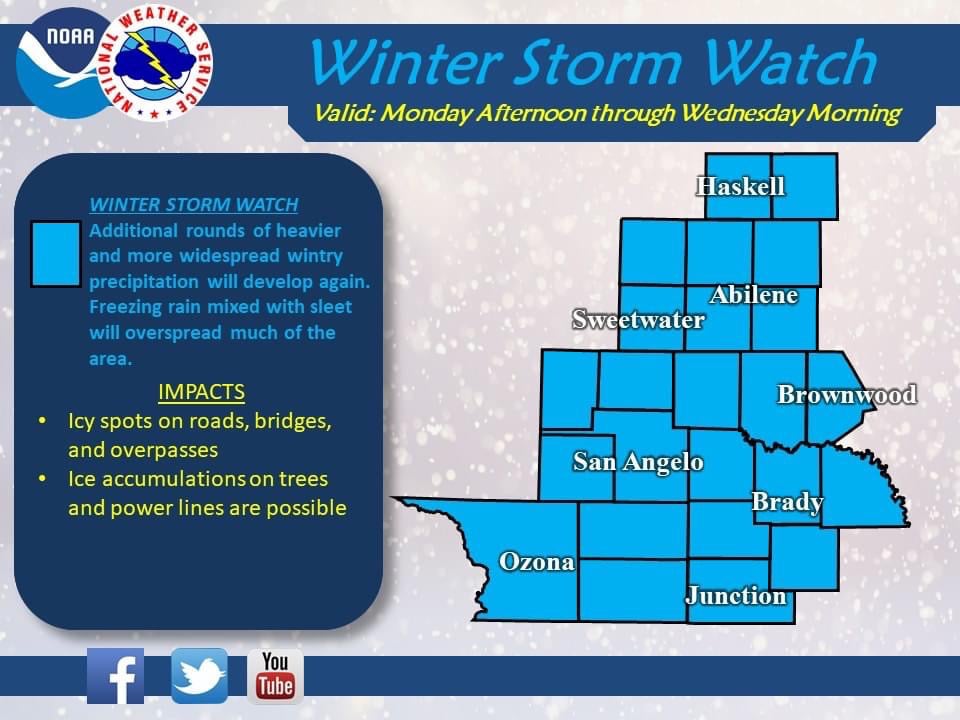Understanding Winter Weather Advisory Impacts On School Schedules

Table of Contents
Factors Influencing School Closure Decisions During Winter Weather Advisories
School districts consider several factors beyond just the advisory itself when deciding whether to close schools due to inclement weather. The safety of students and staff is paramount. Here are key considerations:
-
Road Conditions: Impassable roads are a major factor. Snow, ice, and especially black ice make driving extremely dangerous, especially for school buses navigating often less-than-ideal routes. Icy bus routes present significant risks to student safety, leading to closures. Poor road conditions also affect the ability of staff to reach the schools safely.
-
Visibility: Reduced visibility due to heavy snowfall or blowing snow creates hazardous conditions for both buses and personal vehicles. Students walking or biking to school also face significant dangers with limited visibility. Blizzards, in particular, severely impact visibility and make transportation extremely risky.
-
Temperature Extremes: Extremely low temperatures pose health risks, particularly for students waiting at bus stops or walking to school. Hypothermia is a serious concern in such conditions, prompting school closures to ensure student well-being.
-
Staffing Levels: The ability of teachers, administrators, and other staff to reach school safely is critical. Severe weather can lead to staff absences due to impassable roads or personal safety concerns, impacting the school's ability to function effectively.
-
Building Safety: Heavy snow or ice can cause power outages or structural damage to school buildings. Ensuring the safety and structural integrity of the building is paramount before reopening. Damage to the building could also result in delays until repairs are completed.
How to Stay Informed About School Closings During Winter Weather Advisories
Staying updated on school closure announcements during winter weather is vital. Here's how:
-
School District Website: Check your school district's official website. This is usually the most reliable source of information. Look for a dedicated section on weather-related announcements or closings.
-
Local News: TV, radio, and reputable online news sources in your area usually report school closings. Many news channels provide detailed information regarding weather-related school closures.
-
Social Media: School districts often use social media platforms like Facebook and Twitter to provide updates. However, don't solely rely on social media; always verify information with official sources. Social media posts can be delayed or inaccurate.
-
Mobile Apps: Many school districts offer mobile apps that send instant alerts about school closures and delays. Check your app store for your district's app. These apps often provide push notifications for immediate alerts.
-
Automated Phone Calls/Text Messages: Sign up for your school district's notification system. This ensures you receive immediate alerts via phone calls or text messages about school closures or delays. Register for these services early in the school year.
Understanding the Difference Between a Winter Weather Advisory and Other Warnings
It's crucial to understand the difference between various weather alerts:
-
Advisory: A Winter Weather Advisory suggests that hazardous weather is possible. School closures are not guaranteed during an advisory, though they are possible depending on the other factors mentioned above.
-
Warning: A Winter Storm Warning indicates that hazardous winter weather is occurring, imminent, or likely. School closures become much more likely during a warning.
-
Blizzard Warning: A Blizzard Warning indicates severe blizzard conditions with sustained winds of 35 mph or greater and considerable falling or blowing snow that reduces visibility significantly. School closures are almost certain during a blizzard warning due to the extreme danger to students and staff.
Conclusion
Staying informed about Winter Weather Advisory School Closings is crucial for families. By understanding the factors influencing school decisions and utilizing various communication channels – prioritizing official sources like your school district's website – you can effectively prepare for potential disruptions to your child's education. Don't rely solely on social media or word-of-mouth; proactive preparation is key. Always check your school district's website and official channels for the most accurate and up-to-date information regarding Winter Weather Advisory impacts on school schedules. Stay safe and stay informed about potential Winter Weather Advisory School Closings and other weather-related school announcements!

Featured Posts
-
 Should Investors Worry About Current Stock Market Valuations A Bof A Analysis
May 20, 2025
Should Investors Worry About Current Stock Market Valuations A Bof A Analysis
May 20, 2025 -
 Hedge Fund Manager Banned From Us After Alleged Immigration Lies
May 20, 2025
Hedge Fund Manager Banned From Us After Alleged Immigration Lies
May 20, 2025 -
 Kaellman Ja Hoskonen Loppu Puolan Seuralle
May 20, 2025
Kaellman Ja Hoskonen Loppu Puolan Seuralle
May 20, 2025 -
 Save On Hugo Boss Fragrances Amazon Spring Sale 2025
May 20, 2025
Save On Hugo Boss Fragrances Amazon Spring Sale 2025
May 20, 2025 -
 Matheus Cunha To Man United Latest Update From A Journalist
May 20, 2025
Matheus Cunha To Man United Latest Update From A Journalist
May 20, 2025
